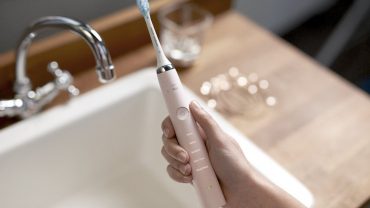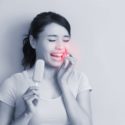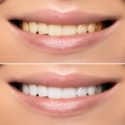How To Use An Electric Toothbrush
Brushing our teeth is one of those things we all think we are perfect at because…well, how hard could it be? After all, we have been doing it since we were kids.
But a dentist would most definitely not approve of most people’s brushing habits. Maybe they brush too hard, use the wrong toothbrush, brush for less than the recommended time and so on. These mistakes are common both when using manual toothbrushes and electric toothbrushes.
Today we want to focus on electric toothbrushes and how to use them. But first, it’s important to go over some basic recommendations that apply to all types of toothbrushes.
Basic Brushing Recommendations
- Don’t use a worn out toothbrush. If your brush has faded and frayed bristles, it will do your teeth no good. In fact, it can cause damage especially to your delicate gums. Dental professional recommend replacing your toothbrush every three months. Some brushes come with bristles that change colour to alert you that you need to replace it.
- Be gentle. Brushing too hard, or overbrushing, can damage both your enamel and gums. It causes the enamel to wear down and the gums to recede. Brushing your teeth with a lot of force does not make them cleaner. So be gentle whether you are using an electric or manual toothbrush.
- Brush for at least 2 minutes. Dentists recommend brushing for no less than two minutes. When you are sleepy or in a rush to go to work you might perceive time as going faster and hence spend only a minute or less brushing. If you are not using an electric toothbrush with a built-in timer use your phone or a clock to countdown the two minutes, making sure you give each quadrant of your teeth equal time.
Using an Electric Toothbrush
There are different types of electric toothbrushes but they all work by moving the brush head in different directions. It can be side to side (vibrating) or in all directions (oscillating-rotating). Whichever electric toothbrush you have, the following usage tips apply.
Of course you need to make sure that the toothbrush is charged. Then apply a pea-sized amount of fluoride toothpaste on the bristles. The brushing process is all about guiding the toothbrush along each tooth and gums.
1. Divide your mouth in four quadrants. You can divide it any way you want as long as the four sections cover all your teeth.
2. Hold the toothbrush at a 45-degree angle to your gum line, making sure that the bristles are always in contact with your teeth. But be careful not to press too hard. Some brands come with a pressure sensor that warns you when you are using too much force.
3. Gently guide the toothbrush along and around each tooth, going quadrant by quadrant. Make sure you have brushed the outer surface, inner surface, the top chewing surface and the space between that tooth and the next. If you have tight teeth, look for a brush head with extra thin bristles.
4. Spend at least 40 seconds on each quadrant making sure that each tooth has received enough attention. I recommend buying an electric toothbrush with a built-in timer. Most timers will not only tell you when the 2 minutes are up but also when you should move on to the next quadrant.
5. Don’t forget about your gums and tongue. Most likely your electric toothbrush has a gum mode. In this mode, the toothbrush is gentler. It massages your gums both to clean them and boost circulation. After the gums, move the brush lightly over your tongue and the roof of your mouth.
How to Clean Electric Toothbrush
When you are done just rinse the brush head and put the toothbrush back into its charging base. If you want to clean the handle, wipe it with a wet cloth dipped in a solution of water and bleach. Never clean the handle by soaking it in water or placing it under the tap.
Additional Tips
For electric toothbrushes with several modes, make sure you have selected the right one before you begin. Common options include sensitive mode, deep-clean mode, gum cleaning mode and everyday cleaning.
Another important tip: make sure you are using the right brush head. For example if you have sensitive teeth and gums, it is recommended you get a brush head that has soft bristles. If you have close or tight teeth, a brush head with thin bristles is better.
Both Phillips and Oral-B, the two biggest electric toothbrush brands, sell many different types of brush heads including those designed for special dental needs.




